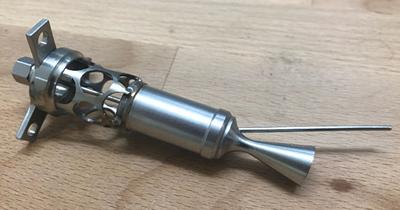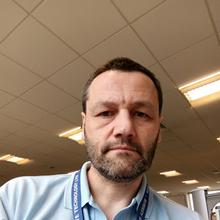Green space: developing a cleaner, greener, propellant for small satellites

Key details of this case study:
Summary: Chemical propulsion utilised in space is far from suitable for small satellites, as the propellant used is dangerous and expensive. Our research aims to investigate an alternative green propellant.
Status: Ongoing
Key staff: Dr Charlie Ryan

This project has resulted in a very promising thruster, which we now just need to find a flight opportunity for. As a result we have developed a very good working relationship with the guys at the University of Southampton.
Explore this case study:
The challenge
Satellites in space currently utilise the very toxic and carcinogenic hydrazine propellant for small thrusters used for attitude control.
Funded by the UK Space Agency through the National Space Technology Programme, our challenge has been to develop a small (1 Newton thrust) chemical thruster propulsion system for small satellites utilising a new greener fuel.
What we did
Working in collaboration with Surrey Satellite Technology Limited, a leading small satellite manufacturing company based in Guildford, Surrey, our scientists have developed the thruster, including a new catalyst and injector.
A thruster has been designed and manufactured, and has successfully undergone duration firing testing within a new bespoke facility at the University of Southampton.
At the bottom of the thruster, which is about 20mm in diameter, is the rocket nozzle, above which are the small pellets of catalyst that decompose the propellant.
Our impact
Using a CT scanner at the University of Southampton Our collaborative team has produced the flight qualification of this thruster for small satellites using a new green propellant.
We achieved a specific impulse for the mk2 thruster of ~160 seconds, approaching the maximum possible, both under vacuum and in atmosphere.
The facilities we used
We used the following facilities within the University - We developed a new small chemical propulsion facility
Find out more about the Engineering and Environment Faculty's many world class facilities.
Partners we worked with
The project is in collaboration with Surrey Satellite Technology Limited, a leading small satellite manufacturing company, based in Guildford, Surrey.
Related Staff Member
Related Staff Member
Other University of Southampton sites
You might also be interested in
Astronautics Research Group
Discover more about our related research group, dedicated to developing an understanding of fundamental and applied research in the field of space physics and spacecraft engineering.
Other space and satellite case studies
Learn more about the research we are undertaking in these areas.
Postgraduate Opportunities
Explore our postgraduate study opportunities.
Media Enquiries
Make a media enquiry about this case study

